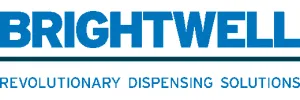News & Insights
Read the latest news from us and our clients across the globe

Posted on 17 December 2014 by adtrak.admin
Cleanliness is crucial in healthcare settings
Lesley Davis from Truvox International explains how keeping floors clean in hospitals and other healthcare environments can help reduce the spread of infections.
The cleaning of healthcare facilities is inextricably linked to the levels of clinical care provided, and perceptions surrounding service delivery. This means that flooring has a lot to live up to when it comes to healthcare environments, in fact it’s hard to think of any other locations where floor surfaces are expected to deliver so much.

It has to withstand some extremely harsh treatment, not just from the constant heavy footfall of people working in, visiting or using the facilities, but also through the movement of equipment such as beds, trolleys and various items of medical machinery. It’s expected to provide a safe environment for staff, patients and visitors, minimising the risks of slips and trips, but cushioning and protecting them from serious injury if the worst happens. And with staff spending a significant part of, sometimes long, shifts on their feet, flooring is also expected to deliver an ergonomic surface that can help to ease repetitive stresses and strains. In summary, hospital flooring needs to be long-lasting, easy to clean and maintain, and help prevent the spread of infections.
Design with cleaning in mind
When designing a new healthcare facility, or extending or refurbishing an established site, the Department of Health (DH) advises that all finishes should be chosen with cleaning in mind, especially where contamination with blood or bodily fluid, which could lead to the spread of healthcare-acquired infections (HAIs), is a possibility. Infection prevention and control (IPC) teams can be a useful ally in this regard, using their expertise and knowledge to advise on the most suitable surfaces and finishes to install.
The DH recommends using finishes that are impervious, smooth and seamless, and slip and wear resistant, especially in clinical areas. Threshold matting, placed at all external entrances can help to capture excess dirt before people enter the facility, assisting the cleaning efforts of operatives on site. Further guidance includes:
- Ensuring there is coving between the floor and the wall to prevent accumulation of dust and dirt in corners and crevices.
- Joints should be welded or sealed to prevent accumulation of dirt and damage due to water ingress.
- In areas where frequent wet cleaning methods are employed, floors should be made of a material that is unaffected by the agents likely to be used.
- Floors that are particularly subject to traffic when wet, such as those in bathrooms and kitchens, should have a slip-resistant surface, but be easily cleaned.
Carpet should not be used in clinical areas, or any other places where frequent spillages can occur. This is because carpets that have been soiled by bodily fluids, such as faeces or vomit, are extremely difficult to disinfect. If soiling does occur, carpets should be cleaned with detergent and warm water, and then steam cleaned. Vacuuming carpets with conventional machines has the potential to recirculate micro-organisms and pathogens back into the atmosphere, so the use of separate ducted systems or HEPA-filtered devices should be considered for carpeted areas.
Although in the minority, carpet is still used in certain locations, such as counselling suites, consulting rooms, or family/visitor rooms, as it provides a more ‘homely’ feel. However, if carpet is to be used, facility managers should ensure that a documented local risk assessment is carried out, in consultation with IPC teams, and a clearly defined pre-planned preventative maintenance and cleaning programme is put in place.
The importance of infection prevention
Our 24-7 social media age means that all services – whether public or privately provided – are subject to constant scrutiny and comment. The health service is especially susceptible to this, with seemingly not a day or week going by without another inquiry, scandal or story making the headlines. A great many of these are linked to the standards of care provided, so ensuring that facilities both look clean on the surface, and reach the required hygiene standards, goes a long way to addressing public perceptions, and helping to prevent the spread of infections.
Controlling the spread of infections or viruses is vitally important in many different locations and settings – such as schools, leisure centres and the workplace – but it is even more crucial for healthcare providers. People visiting or receiving treatment in these environments are already vulnerable to the spread of infection, so making sure that effective cleaning regimes are in place for waiting rooms, corridors, reception areas and wards is key. A clean and welcoming environment is also important from an aesthetic point of view, engendering feelings of well-being and trust in people who may be anxious or unwell.
The key to reducing the incidence of HAIs and cross contamination is to keep caring environments cleaned to a standard as near to ultimate hygiene as possible.
In his foreword to the National Standards of cleanliness for the NHS (April 2001), the then Secretary of State for Health, Alan Milburn, said: “Good hospital care depends on getting the basics right: making sure that the food is good, the care is there, and the wards are clean.” This succinctly summarises the main points that need to be delivered on, to ensure that public confidence in the healthcare services remains solid.
The National Specifications for Cleanliness in the NHS, published by the National Patient Safety Agency in April 2007, expanded on the need to provide a clean and safe environment. It stated: ‘This key priority, coupled with increasing public concern about HAIs, means hospitals need to not only be clean but able to demonstrate how and to what standard they are kept clean.’
Keeping a healthcare environment clean is a constant battle, as there are so many opportunities for contamination and transmission. Hands, surfaces and airborne pathogens, mean that cleaning needs to be constant and meticulous. Infectious micro-organisms can enter the air by a variety of routes including sneezing, coughing, skin shedding, patient treatment, and activities such as bed-making. Organisms such as MRSA (Methicillin-resistant Staphylococcus aureus), Colstridium difficile spores, VRE (Vancomycin-resistant enterococci) and Acinetobacter can remain viable in the environment for months, and can have severe implications for patient safety. However, a number of studies* have shown that improved cleaning and disinfection of environmental surfaces can reduce the transmission of such pathogens.
Guarding against cross contamination
Infection control teams are increasingly requesting that neutral detergents and taurine-based products are used to clean safety flooring – but these need to be applied by a machine to be truly effective. Operatives using conventional mops can’t put enough pressure on the floor to ensure total efficacy. Neutral detergents will only work effectively in a machine as they need the thoroughness provided by brush agitation. Brushes should be colour-coded to prevent cross contamination, and those made from materials such as poly-propylene don’t harbour bacteria like natural fibres, and are easy to disinfect. These are all crucial points to consider when selecting cleaning equipment, as are the speed and pressure at which brushes operate. Too much friction can cause burn marks to floors, so this aspect should be thoroughly researched before any purchasing decisions are made.
As well as ensuring all operatives are fully trained and equipped with the right equipment or machinery to clean each specific location, there are other ways they can contribute to preventing cross contamination, once cleaning has been completed. Micro-organisms thrive in warm, moist environments, and dust can enable them to become airborne, so the following steps should be followed with floor cleaning machines:
- After use, ensure all water tanks, both clean and dirty, are emptied
- Clean and rinse through both water tanks
- Clean and rinse squeegee assembly and blades
- Clean and rinse all hoses
- Leave all tanks open to air dry
- Wipe clean all outer surfaces
Infection control is undoubtedly crucial in healthcare environments, and the correct floor cleaning and maintenance methods play an invaluable role in helping to reduce the occurrence of HAIs.
*
Kaatz GW et al. Am J Epidemiol 1988;127:1289
Mayfield JL et al. Clin Infect Dis 2000;31:995
Hayden MK et al. Clin Infect Dis 2006;42:1552
Boyce JM et al. Infect Control Hosp Epidemiol 2008;29:723
Dancer SJ et al. BMC Med 2009;7.28
About the author
Lesley Davis is a Regional Area Manager for Truvox International, who has spent over 30 years working in the cleaning machinery and solutions industry, specialising in the supply of equipment to the healthcare sector.
She has vast experience working with the NHS in England, Ireland, Scotland and Wales, ensuring that differing audit procedures are adhered to, and hygiene standards achieved through the provision of the most appropriate and effective cleaning equipment.
She holds a university certificate in infection control, including cleaning and health and safety issues, and is currently working towards a university certificate in cleaning management.
She works closely with the Association of Healthcare Cleaning Professionals (AHCP), and with flooring manufacturers, to establish the best ways to clean different flooring surfaces.
Published in AHCP Voice – Autumn 2014
Experts in Public Relations Services & Communications Management
Our ServicesGenuine industry specialists in cleaning and hygiene, environmental and recycling, and facilities management
Our Sectors












